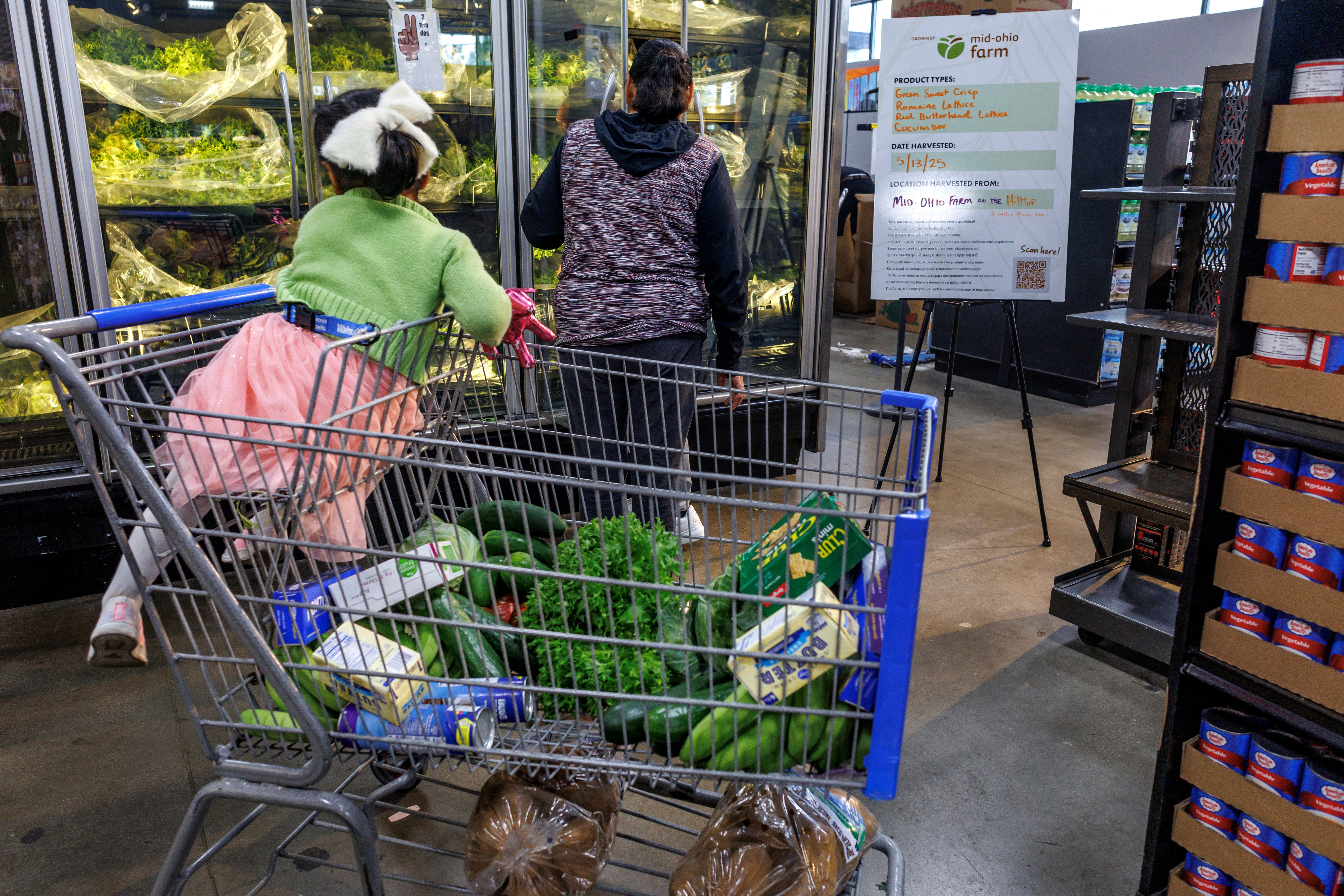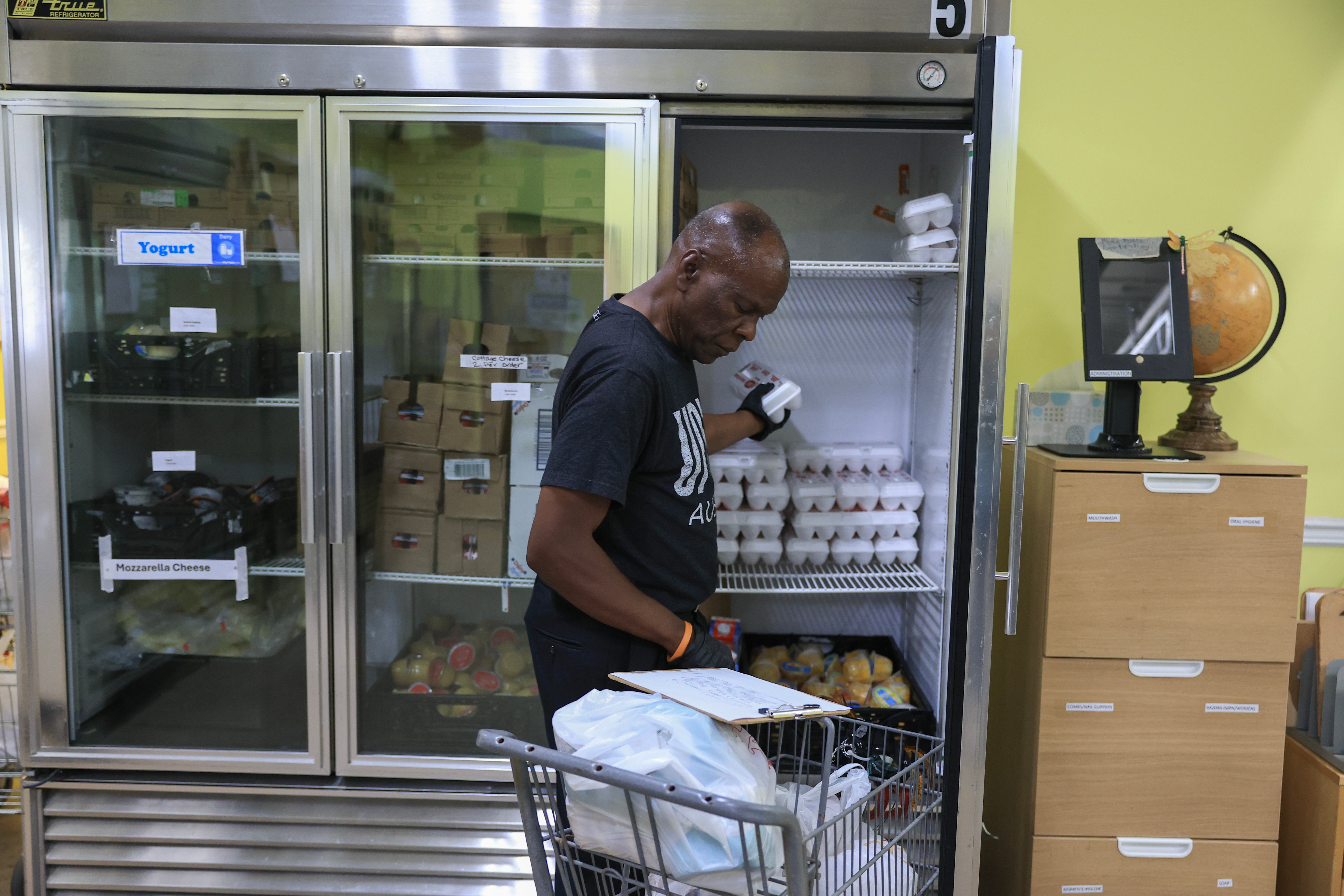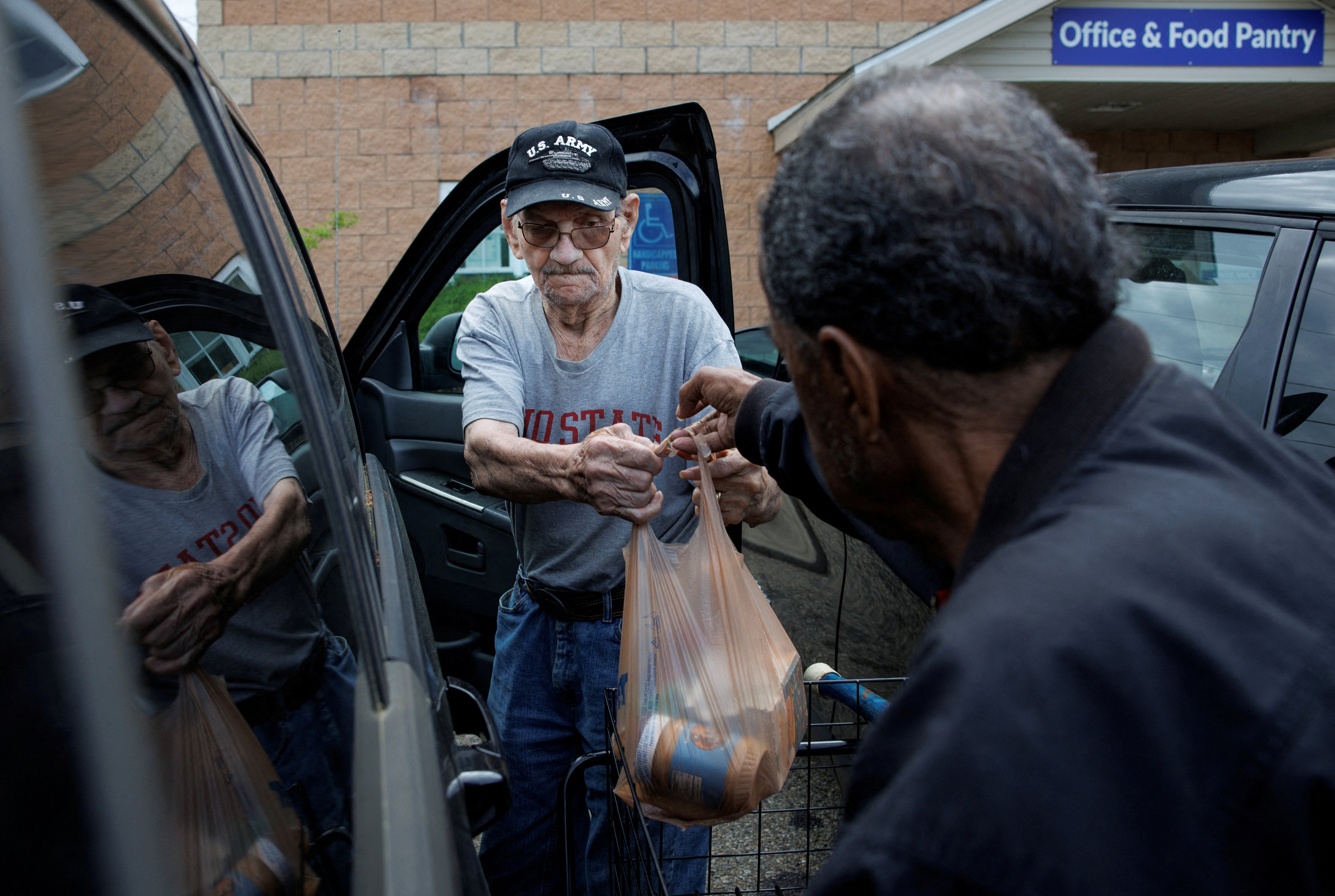In state after state, food pantries across the country are sounding an urgent warning: They can’t handle what’s coming.
Republican members of Congress just passed the largest-ever cuts to the Supplemental Nutrition Assistance Program, a lifeline that keeps more than 41 million Americans, or 12 percent of the population, from going hungry. More than 13 million recipients are children.
The cuts in Donald Trump’s “One Big Beautiful Bill” will restrict eligibility for SNAP enrollment and divert a significant chunk of the program’s costs to states.
Anti-hunger advocates are calling the Republican-led legislation an imminent crisis for millions of families who rely on food stamps to buy groceries they couldn’t otherwise afford — and an existential threat to food banks that support the most vulnerable Americans.
The nation’s already-strained network of community food banks anticipates a surge in new visitors who lose their SNAP benefits.

“There is no backup plan,” according to Laura Lester with Feeding Alabama, a state with more than 730,000 SNAP beneficiaries. “The pantries that are already bending under the strain have no capacity left to meet such a massive increase in need.”
Food banks across the country are reporting greater demands for food assistance than what they saw even at the height of the COVID-19 pandemic. Community food pantries were already stretched thin from years of rising food costs and growing food insecurity when they started bracing for price hikes and food shortages under Trump’s on-again, off-again tariff regime.
SNAP provides roughly nine meals for every one meal provided by a food pantry, according to advocates. In the measures passed by Congress, federal funding for SNAP would plummet by $186 billion through 2034, or roughly about 20 percent.
The cuts would eliminate the equivalent of 6 to 9 billion meals annually, according to Feeding America, the nation’s largest hunger-relief organization, which operates more than 200 food banks and serves more than 46 million people.
By comparison, the entire Feeding America network distributed 6 billion meals in 2024, according to CEO Claire Babineaux-Fontenot.
Food banks took another hit this year after Trump’s Department of Agriculture cut more than $1 billion in assistance by ending two pandemic-era programs — including more than $420 million for the Local Food Purchase Assistance Program, which helped states to buy and distribute food from farmer, and another $440 million for Local Food for Schools, a similar program for schools and child care facilities.
The administration also froze deliveries to food banks made through the agency’s Commodity Credit Corporation pending a review of the program.
Food Bank for New York City lost 2.5 million meals thanks to cancelled shipments under those cuts.
Under Republican plans for SNAP, the state would be forced to shoulder $1.8 billion to keep those benefits afloat, “an existential threat to the idea of SNAP being a safety net,” Food Bank for New York City director of public policy and advocacy Nicole Hunt told The New York Times.
More than 65 percent of New York food pantry visitors are employed, according to the Poverty Tracker from Columbia University and anti-poverty group Robin Hood. Yet average monthly visits to pantries and soup kitchens have shot up 85 percent since 2019, according to New York food rescue and assistance organization City Harvest.
Roughly 200,000 New York City residents could lose access to SNAP and another 18 million New Yorkers would likely see their benefits decrease under the bill, according to City Harvest.
Even before the cuts were introduced, “our partner food pantries are telling us that they’re having to turn away people in need of food and to decrease the number of food distributions they offer. That should not be happening in one of the most affluent cities in the world,” according to City Harvest CEO Jilly Stephens. “Taken together, it’s a perfect storm.”

States are likely to tighten budgets on other critical food assistance programs to cover SNAP costs as states are forced to come up with millions of dollars to keep the program running. Nearly half of U.S. states have already issued warnings that they are unlikely to fully fund SNAP without sacrificing major cuts in their state budgets.
In Ohio, where lawmakers recently approved the state’s $60 billion operating budget, food banks requested an additional $30 million to meet increased demands and rising food costs were rejected. The budget instead accounts for roughly $24.5 million.
“Food banks can’t make up the difference, philanthropy can’t make up the difference — there’s been too many cuts to federal grants, too many cuts to so many different things that without SNAP,” according to Second Harvest Food Bank of North Central Ohio president Julie Chase-Morefield. “There just isn’t anything else. Our real fear is that people just don’t eat.”
Kentucky lawmakers would have to find $239 million in the annual budget to maintain benefits for nearly 576,000 people, according to the Kentucky Center for Economic Policy.
Celia Cole, CEO of Feeding Texas, where more than 3 million people receive SNAP assistance, said the program works precisely because it’s federally funded.
“Offloading benefit costs to states would undermine SNAP’s ability to respond to economic downturns and natural disasters — precisely when families need help the most, and state coffers are most depleted,” she said.
The cuts will have “immediate and devastating consequences — more empty refrigerators, more hungry children, and more impossible choices between food, medicine, and rent,” according to David Emerson, CEO of the East Texas Food Bank.

In Chicago, which accounts for nearly one-third of all SNAP recipients in the state of Illinois, “food insecurity and poverty will skyrocket and demand will increase on an already strained emergency food system,” according to the Greater Chicago Food Depository, which serves food banks across Chicago and Cook County.
The group estimates that as many as 340,000 Illinois residents could lose SNAP benefits, while Illinois Governor J.B. Pritzker’s office estimates as many as 427,000 people in the state are vulnerable to cuts.
“We are heading into what is likely to be a crisis of unimaginable proportions and we are heading into that from a place of great vulnerability,” the organization’s CEO Kate Maehr told Book Club Chicago.
“People are going to suffer and these families have children,” added Evelyn Figueroa, founder of Chicago’s Pilsen Food Pantry, which distributes roughly 33,000 pounds of food to about 600 households a week. “Not all costs are financial. Human suffering is a cost.”
In Indiana, where more than 600,000 people receive SNAP benefits, food banks pooled together to take out television ads urging viewers to call their representatives.
“Hoosiers will continue to struggle feeding their families with the drastic cuts Congress is currently considering,” said Emily Bryant, the executive director of Feeding Indiana’s Hungry. “The nonprofit sector is already scrambling to meet the need — the lines at food pantries are getting longer by the day. We call on Congress to act now to save lives.”

